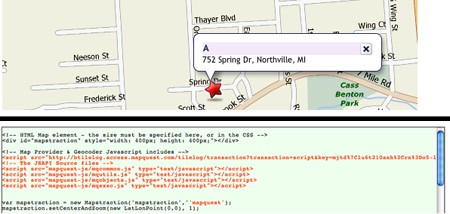
Maybe you’ve tinkered a bit with the Google Maps API. Most of the software produced with it is not all that useful or entertaining, but a few gem have shone through. Still, wouldn’t it be better if applications produced with it could be easily ported to other online mapping services like Mapquest or Yahoo! Maps?
This is possible with Mapstraction, a Javascript API that works with nine mapping services and plans to incorporate more into the fold. Mapstraction has open-source features that normalize functions across the biggest services, which makes searching for map data a consistent, predictable experience no matter which service you use.
Some of Mapstraction’s current features are what you would expect: point, line, and polygon support, image overlay, GeoRSS and KML feed importing, and several others. We’re really looking forward to future versions with OpenStreetMap support. Currently Mapstraction works with only commercial mapping services, but OpenStreetMap combined with Mapstraction directly hits the sweet spot; a customizable, open source map.
[via Hackszine]

















